Two Faces, One Oncogene
By Hui Li | June 27Our Center’s Discovery in Science Reveals “Two Faces” of the FOXA1 Oncogene
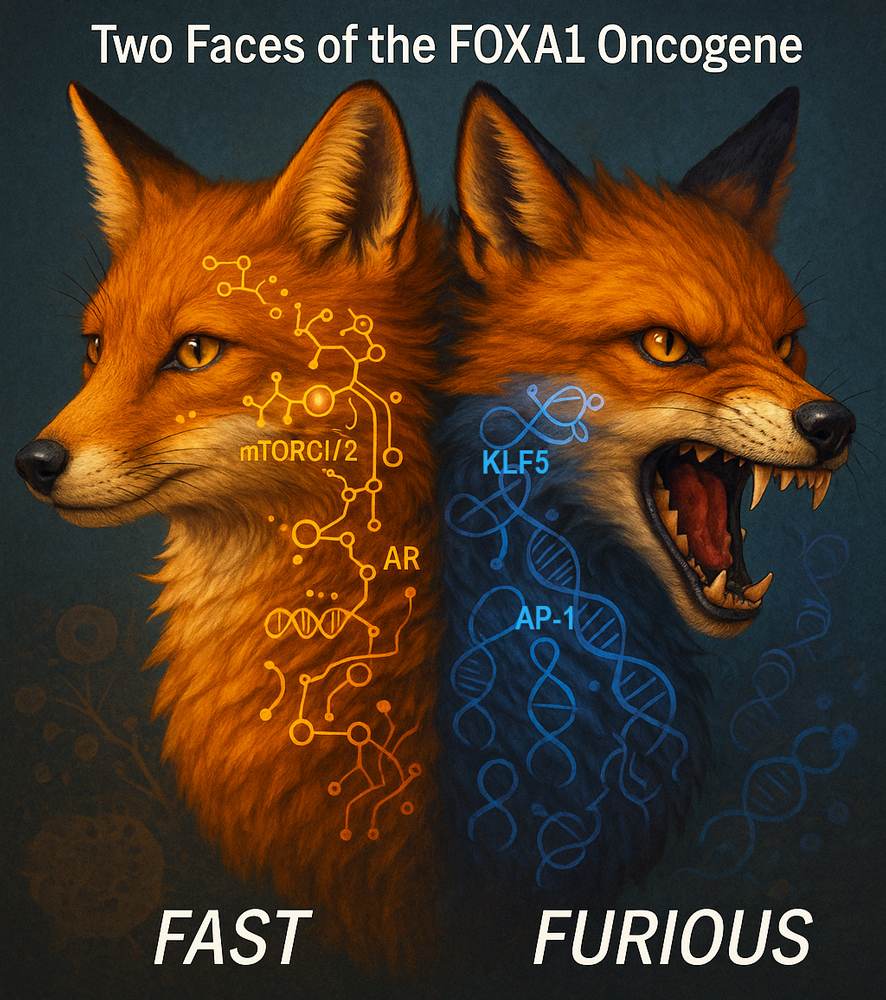 Our lab’s recent study, published in Science, uncovers how two different types of mutations—Class 1 and Class 2—in the FOXA1 gene drive the disease at different clinical stages.
Our lab’s recent study, published in Science, uncovers how two different types of mutations—Class 1 and Class 2—in the FOXA1 gene drive the disease at different clinical stages.
Prostate cancer is tricky to treat, often changing its form as it grows and spreads. Using mouse models, we show how FOXA1—already known as a major player in prostate cancer—wears two very different masks to enable distinct disease biology and escape from hormonal therapy:
- Class 1 mutations: These mutations originate in the primary disease and help trigger aggressive prostatic tumors, especially when another cancer gene, TP53, goes missing. Notably, Class 1 mutant tumors are still vulnerable to hormone therapy, shrinking when androgens (i.e., male hormones) are blocked.
- Class 2 mutations: These mutations are found mostly in advanced, metastatic prostate cancer. Class 2 mutant do not start tumors by themselves. Instead, they help cancer cells change their identity and gain stemlike progenitor characteristics, becoming resistant to hormonal treatments.
This is the first time anyone has shown in animal models how FOXA1 mutations actually drive prostate cancer from the very beginning and later, in a different form, help it outsmart therapies.
“For the first time, we’ve shown in living models that FOXA1 isn’t just a passenger—it’s a true engine driving the start of prostate cancer,” said Dr. Arul Chinnaiyan. “While earlier research used cell lines, our mouse models provide clear, definitive proof that FOXA1 mutations can spark tumor growth when combined with p53 loss. Even more exciting, we discovered that different mutations in the same gene play unique roles—some kick off the disease in its earliest stages, while others help cancer resist treatment and come back stronger in advanced cases.”
Dr. Abhijit Parolia added: “Human prostate tumors are known to depend heavily on androgens for growth, but it’s been tough to mimic that in animal models. Our research shows that tumors driven by Class 1 FOXA1 mutations need a constant supply of androgens to survive, making our FOXA1/p53 mouse model a powerful new tool for studying early prostate cancer and testing therapies.” He continued: “In metastatic prostate cancer, Class 2 FOXA1 mutations take control and unlock hidden regions of DNA, switching on genes that help cancer cells adapt and thrive even in the absence of hormones. This explains how some prostate cancers manage to escape treatment and become harder to fight.”
We now know FOXA1 is a true “driver” of prostate cancer, both at the start and as it becomes resistant to treatment. By understanding these two faces of FOXA1, we can start thinking about new, more targeted therapies for patients at every stage of the disease.
We thank our team and collaborators for their contributions!
—
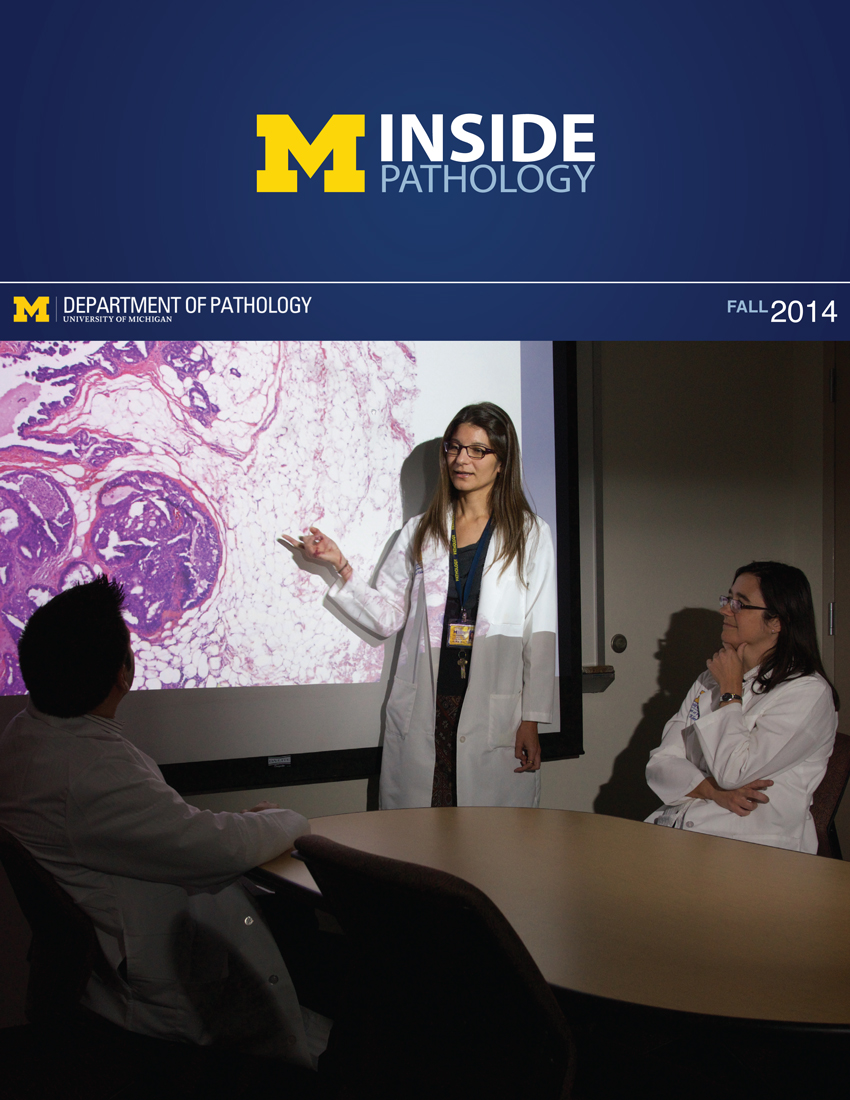 ON THE COVER
ON THE COVER
 ON THE COVER
ON THE COVER
 ON THE COVER
ON THE COVER
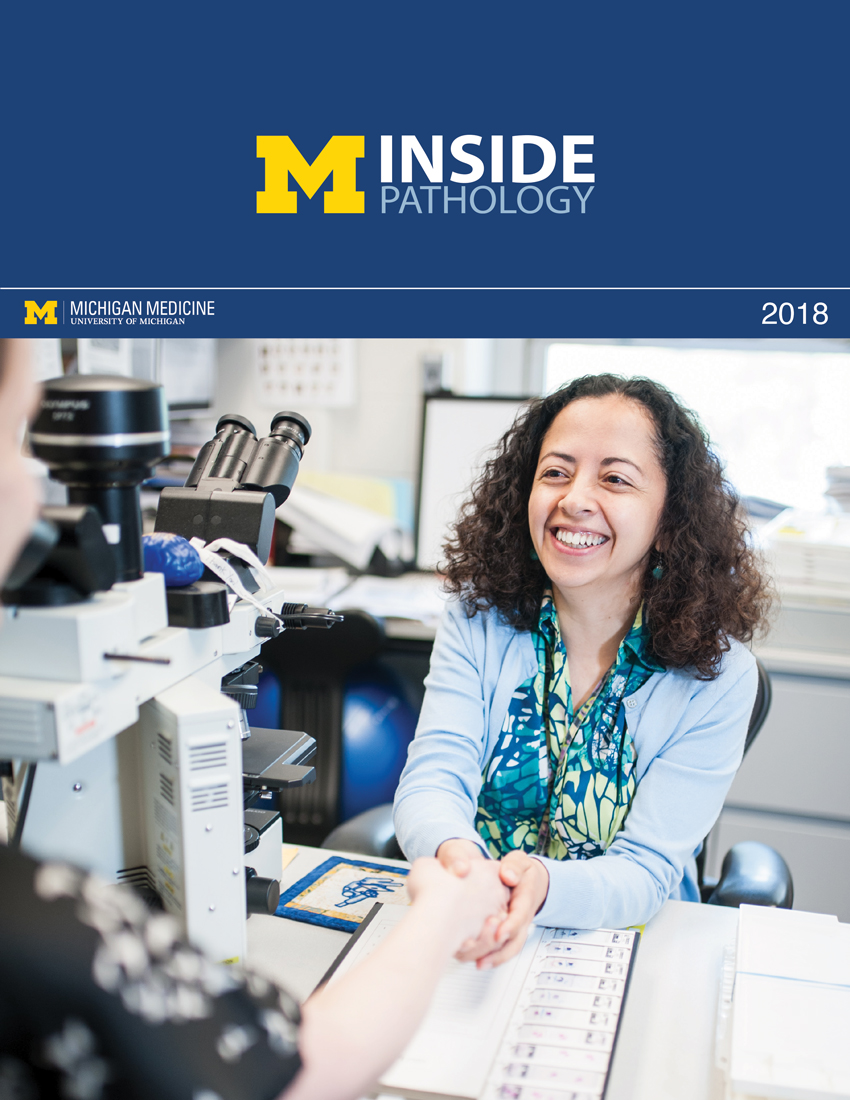 ON THE COVER
ON THE COVER
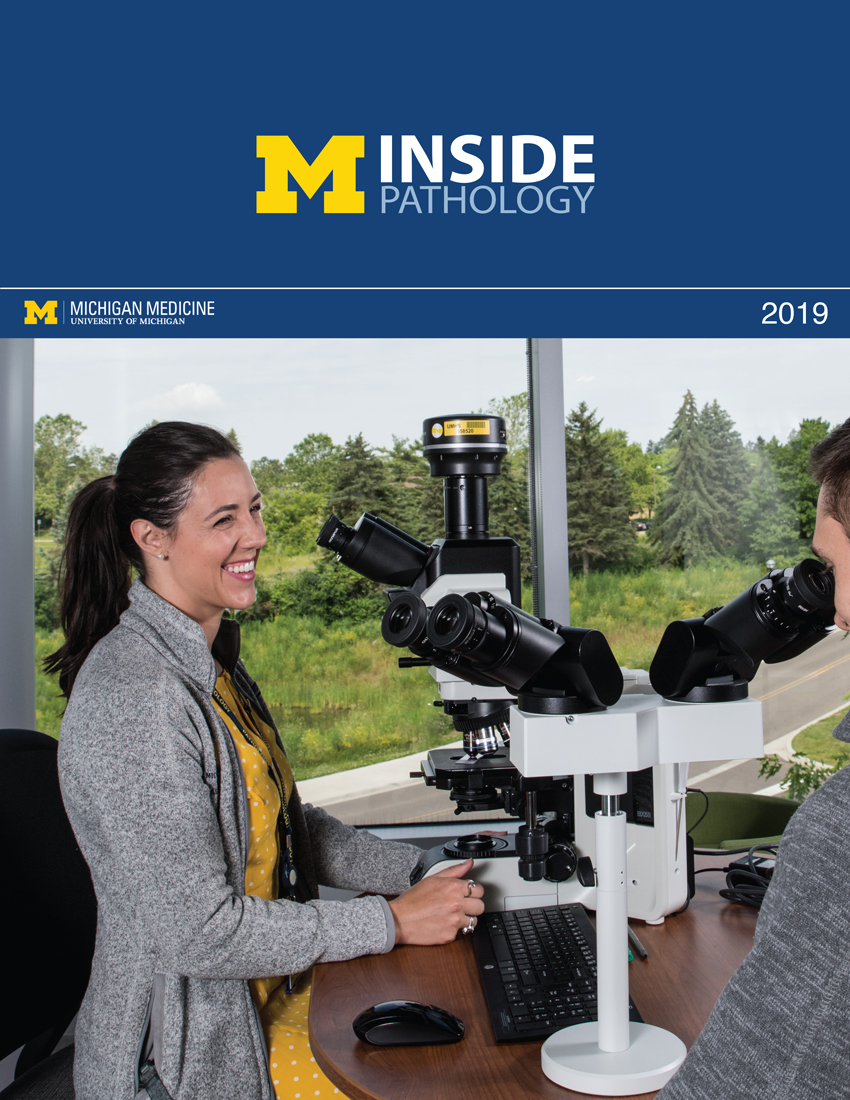 ON THE COVER
ON THE COVER
 ON THE COVER
ON THE COVER
 ON THE COVER
ON THE COVER
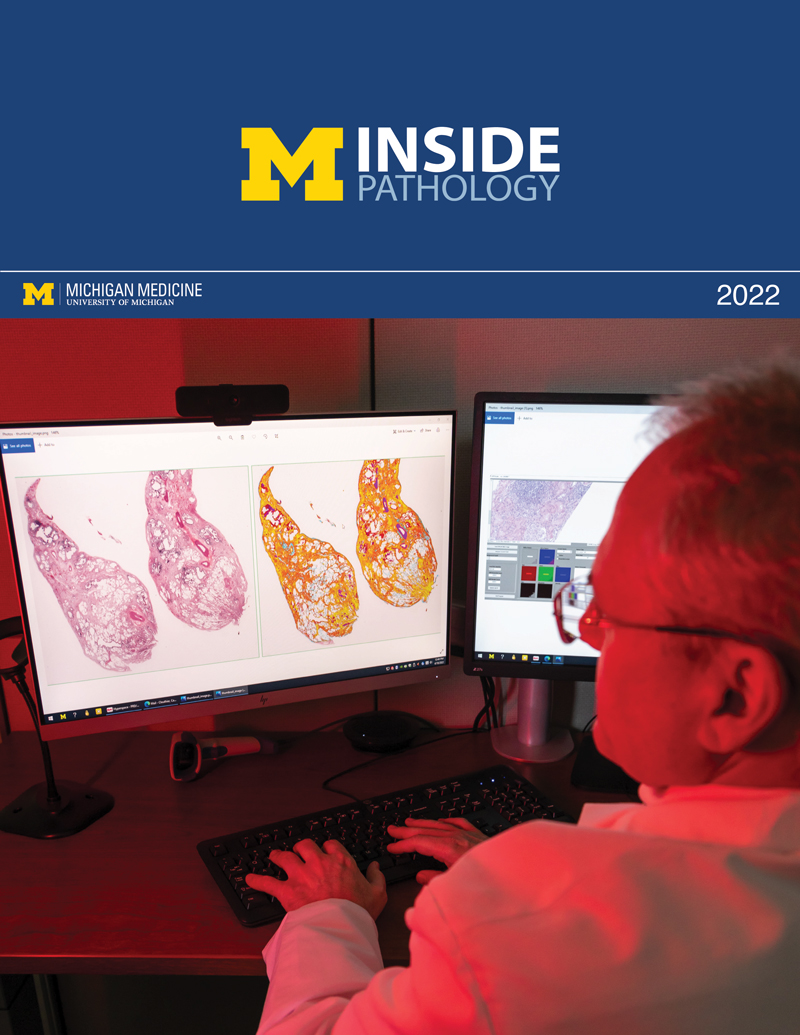 ON THE COVER
ON THE COVER
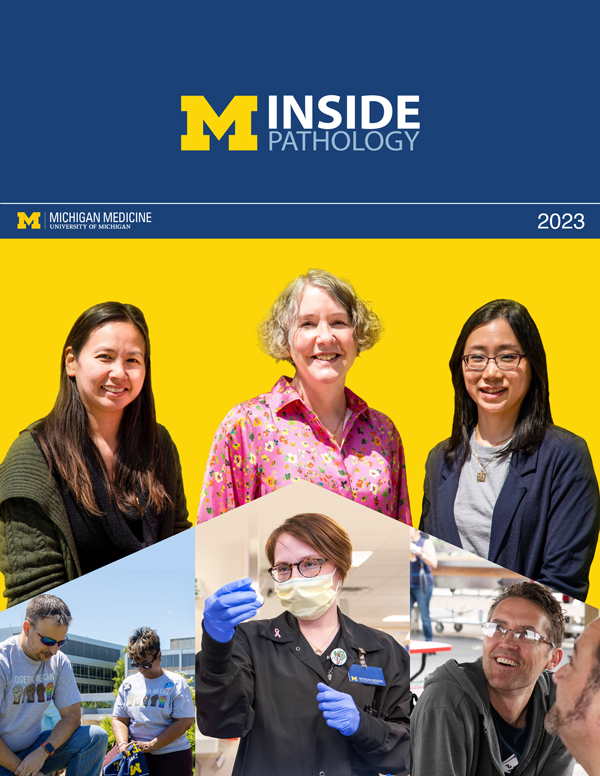 ON THE COVER
ON THE COVER
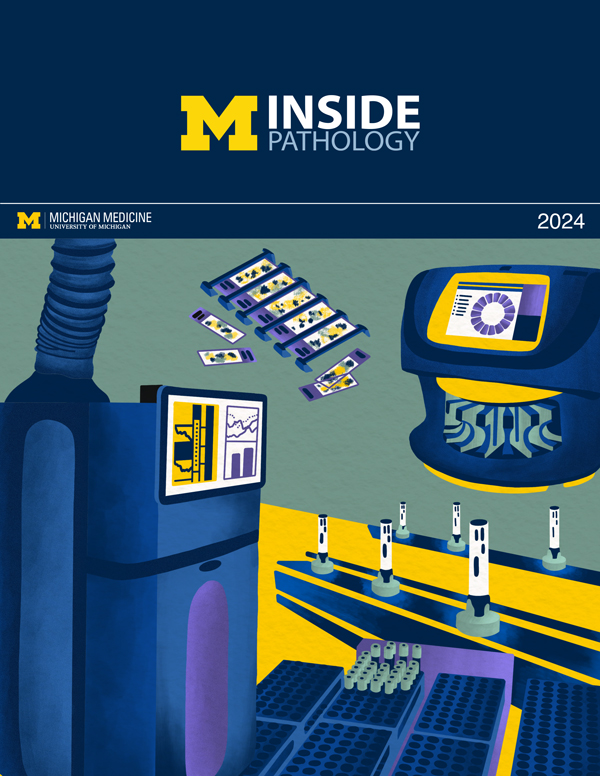 ON THE COVER
ON THE COVER
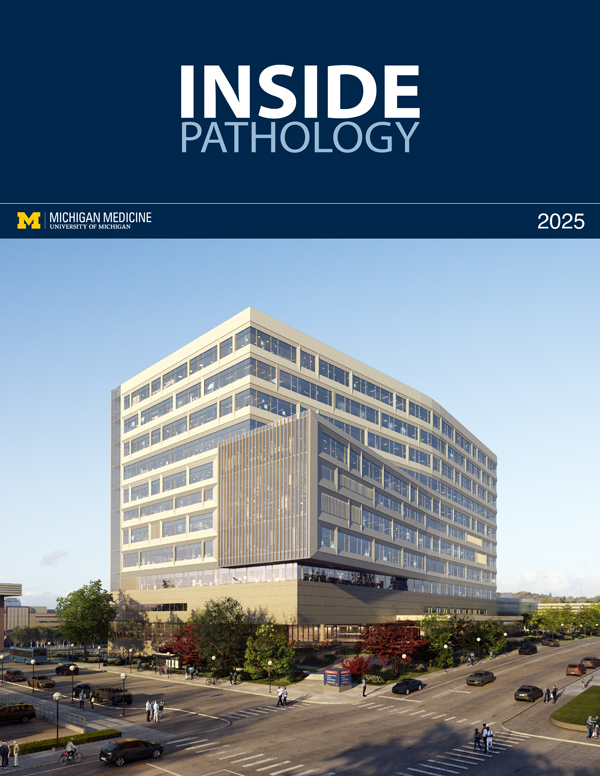 ON THE COVER
ON THE COVER
